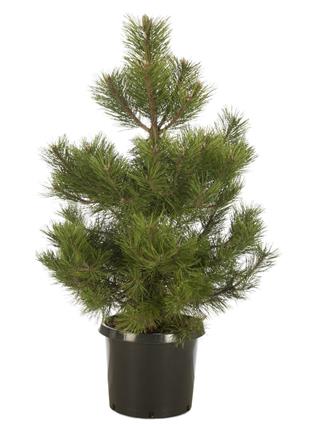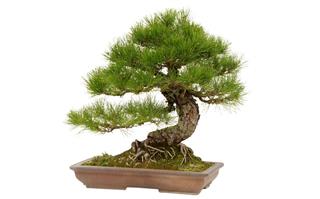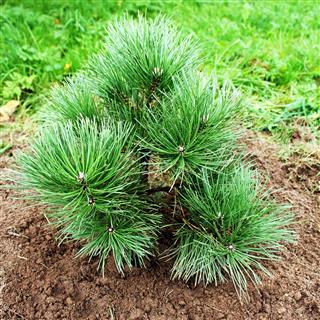
The black pine tree is an evergreen plant that grows in the cold regions of North America and Europe. These trees have long, needle-shaped leaves, and are popular for ornamental and commercial purposes.
Pine trees are coniferous trees that belong to the family, Pinaceae. It is believed that there are 115 varieties of pine trees, of which 35 species are in North America alone. Among the other varieties, black pine trees are the most common and can grow to around 45 meters in height.
Identification
Black pine trees can be divided into three types―nishiki, yatsubusa, and seedling. In the Nishiki variety, the bark of the tree has a cork-like appearance, while the yatsubusa variety are dwarf-sized with small needle-shaped leaves. The seeding variety is cultivated completely from seeds, while the other two varieties are produced by the process of cutting or grafting.
The Japanese black pine is one of the better varieties which is produced from seeds. This variety is famous for its deep fissures, flaky appearance, and deep-blue-colored bark. At times, the bark starts to show ridges that crack after about four years. This property makes it an excellent option if you want to use it as a bonsai.
Japanese Black Pine Tree
The Japanese black pine is pyramid shaped and of medium height. It is mainly used for decorating a landscape and planted around shorelines. The buds of this variety of pine are silver colored and are about ½ to ¾ inches long. As they can resist the presence of salt in the soil, they grow well close to beaches, thereby making a landscape scenic. The tree grows best if the pH value of the soil is in the range of 5 to 6.5, with enough moisture and excellent drainage. Even though this variety can resist any temperature conditions, if it falls below -10 °F it may be harmful to the tree.
Austrian Black Pine Tree
The Austrian pine tree is another variety which is found in abundance in most parts of Europe. They grow to a height of 2,000 meters above sea level. They have dark-green leaves which are about four inches long. Mostly used as a decorative tree, the Austrian pine can grow up to 50 feet high.
Similar to other pine trees, they are easy to grow for the first 25 to 30 years of their lives. After that, maintaining them becomes a bit difficult since their capacity to resist diseases decreases. The most common ailment that occurs is the needle-cast disease and diplodia blight, which are two kinds of fungal disease. It begins at the base of the plant, affecting older needles first, and then, newly grown ones.
Caring for a Black Pine Tree
If you want to plant this tree in your garden, make sure that you transplant them in early spring when the buds start to swell. This may start from the latter half of February and go on till the middle of April. Once you have transplanted the tree, you should protect it from freezing. The soil conditions may vary, but it should provide excellent drainage. You can use haydite, fragmented granite, pine bark chips, or surface soil mixes, while planting.
Black pine trees can tolerate excess water which makes them a great option to plant in regions where there is abundant water. But try not to add too much water on your own, as it may harm your plant after a certain extent.


